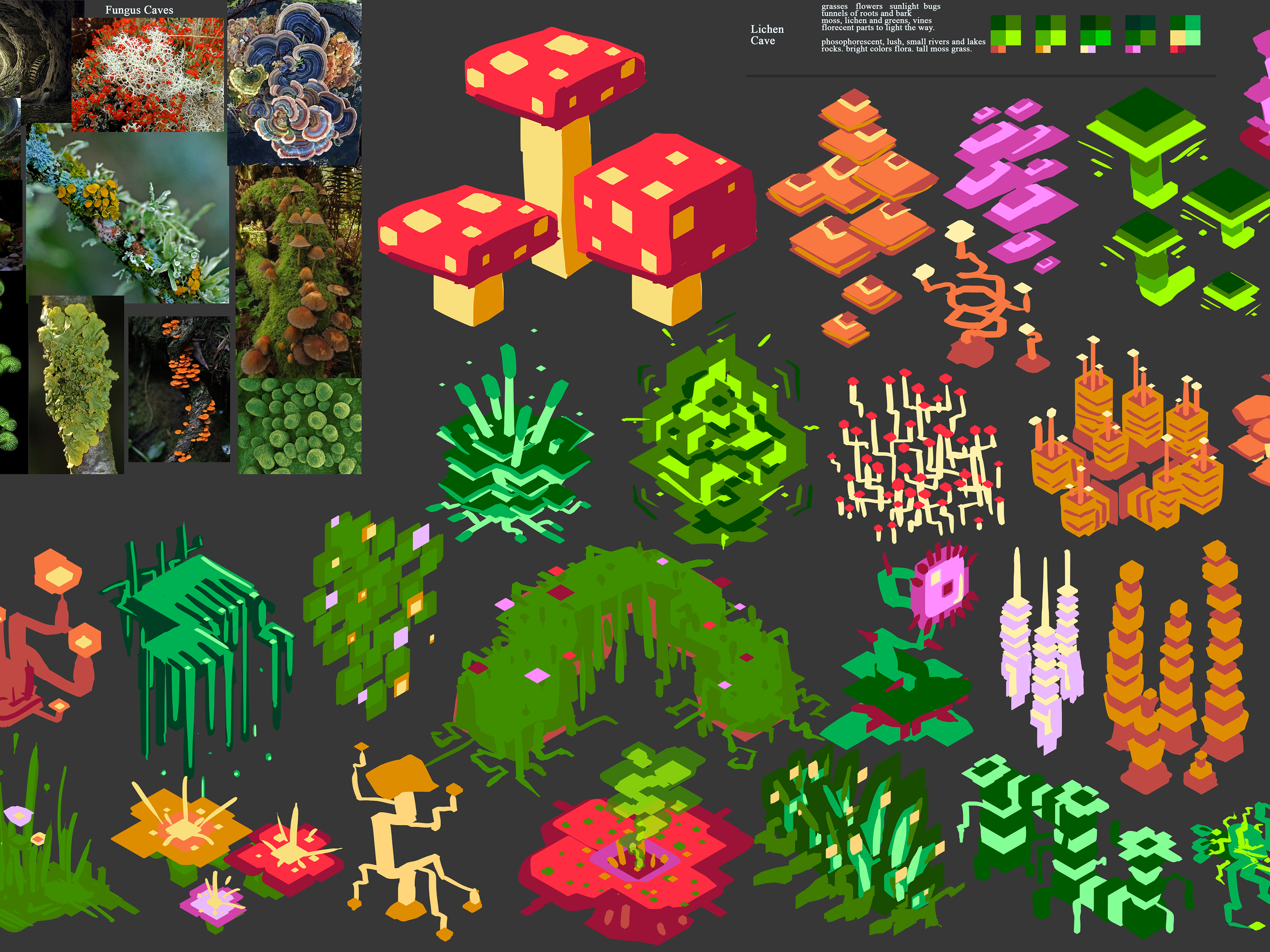
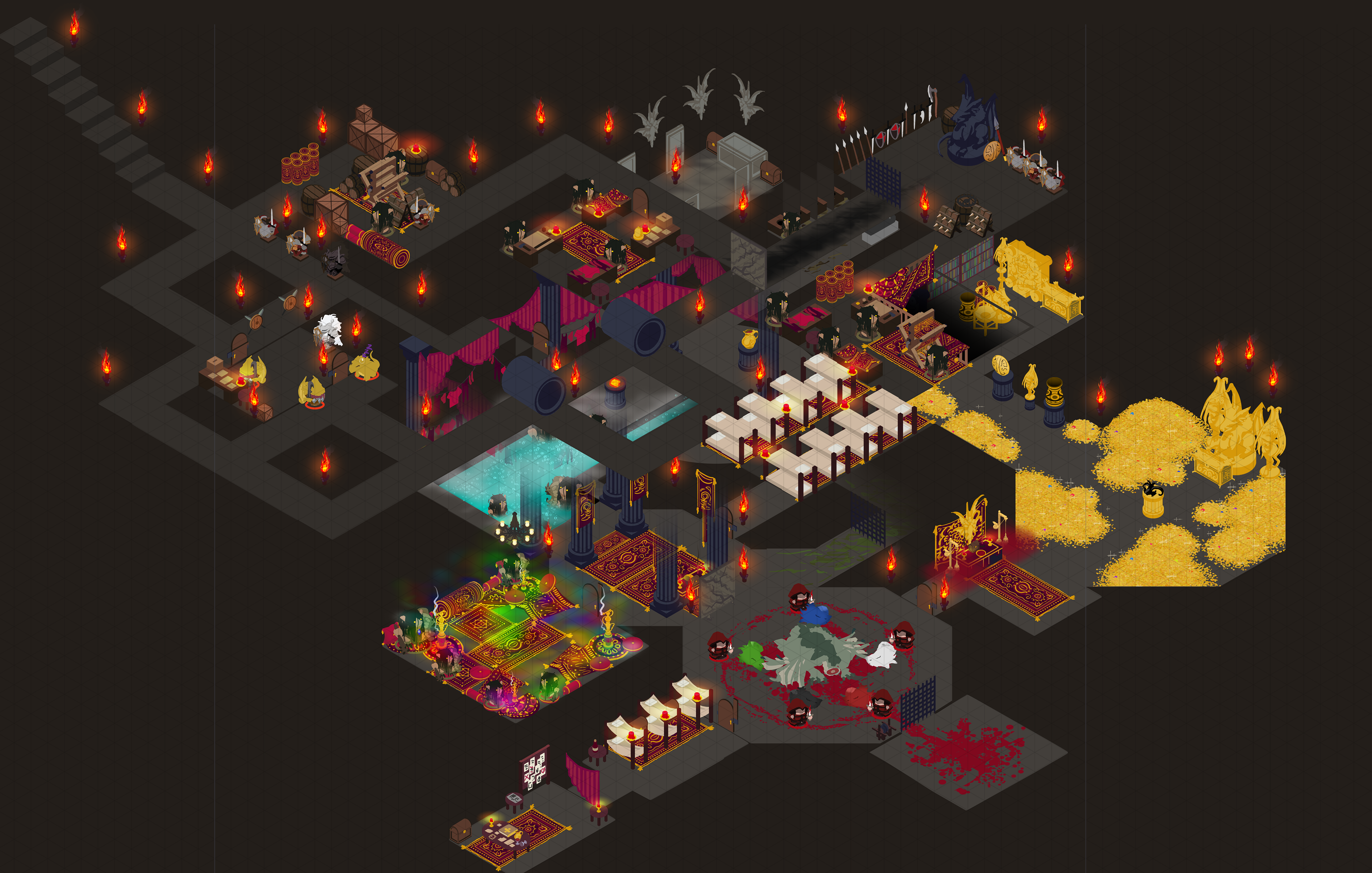
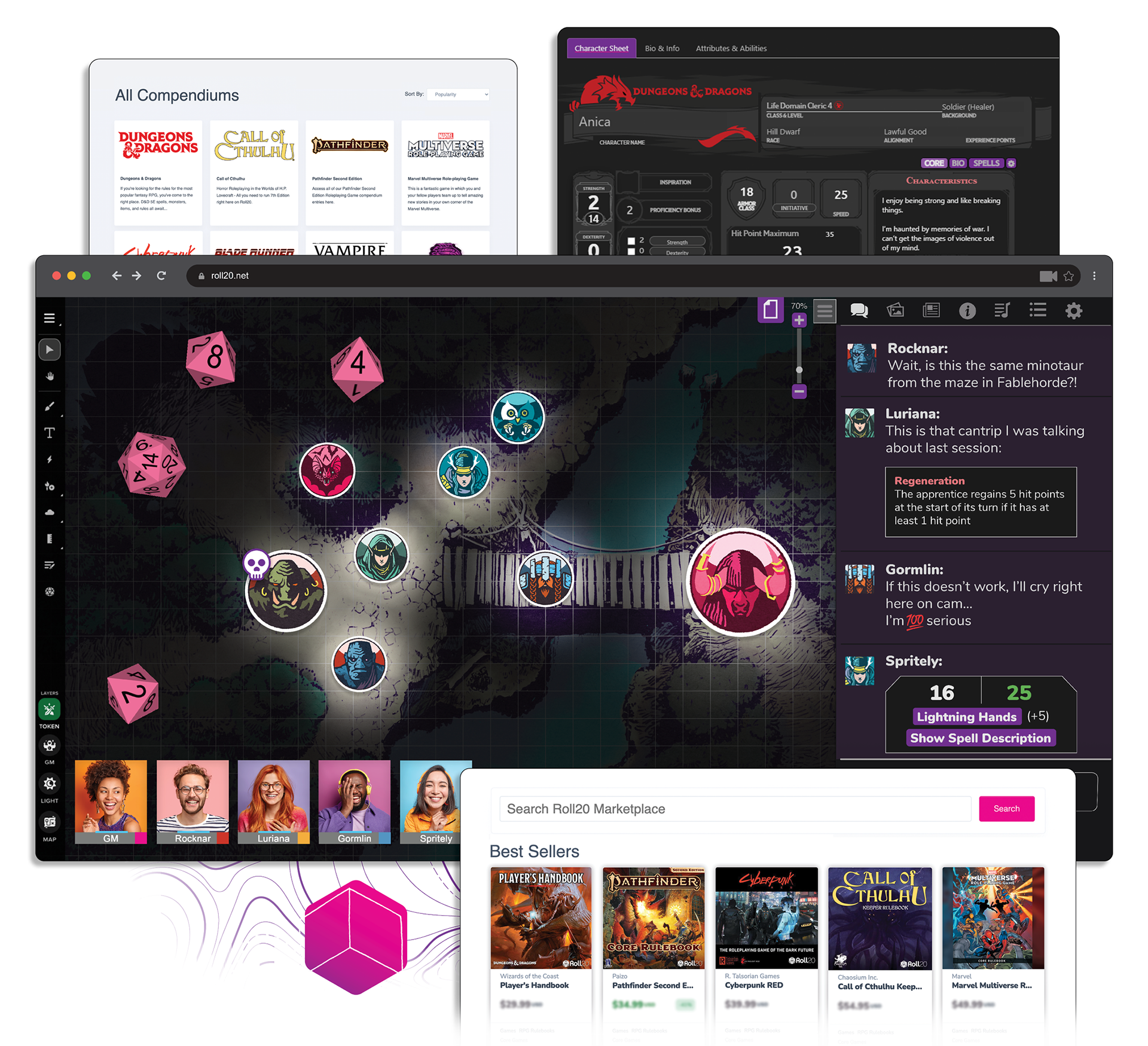

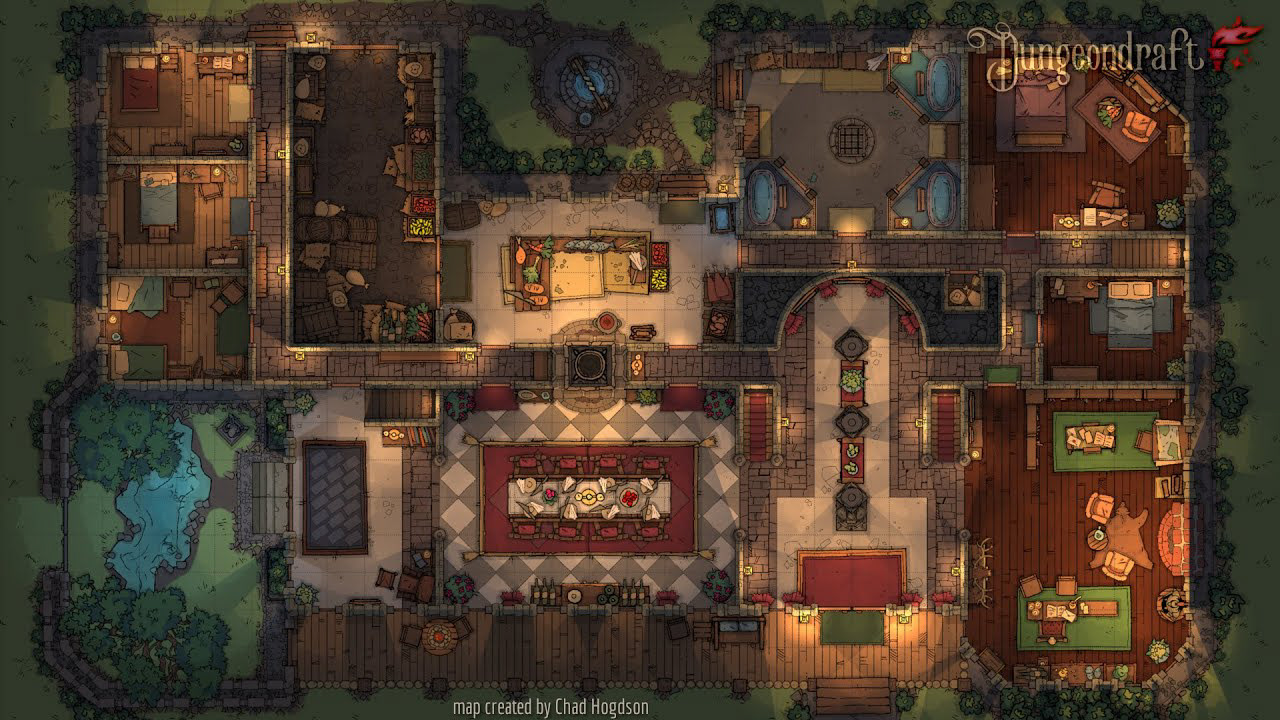
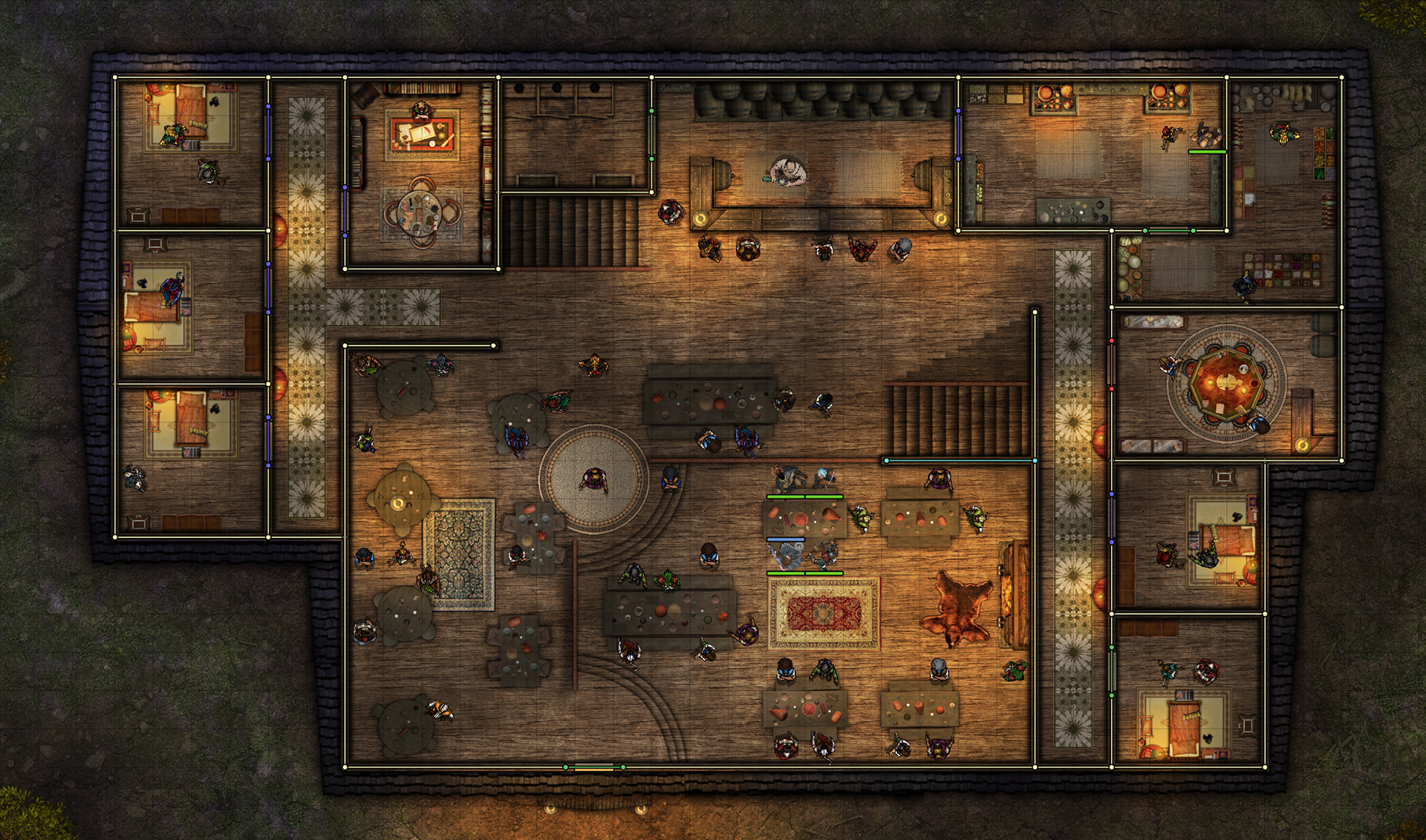
About virtual tabletop simulators
I've been playing tabletop role-playing games ever since the duration of my college days and so much so that I even took classes dedicated to studying them and their impacts and implications towards creative world-building and game design. I started picking up new systems and developing new content of my own, and grew closer to my community because of it. When graduation came and friends had to travel separate ways to pursue careers and futures across the world, we had no idea how to capture the passion that existed when we all sat in front of the whiteboard. We were afraid that the magic and the world we built together would be lost; I refused to let such a thing happen.
The most viable solution to long-distance tabletop endeavors comes in the form of virtual tabletop simulators, or VTTs. There are dozens of them out there- Roll20, Foundry VTT, and so on- which allow for visualization of game elements and stat tracking to allow for ease of play across a virtual platform. Many have different advantages and disadvantages, but all of them seem to fall into a similar category of either leaving too little or too much to the imagination compared to what my players and I are often used to. This is often the case when it comes to narrating how events unfold within a space; two-dimensional maps easily lose the sense of vertical height and physical volumes in a manner that makes maps feel cartoonish, whereas three-dimensional maps easily become too grounded in these facets and make if more difficult to engage players' imaginations.
In games which allow for "the theatre of the mind," where one's own perception and visualization of an action or experience is what best defines their enjoyment of the matter, there needs to be an equal amount of room left for interpretation while also providing enough detail to keep players well-informed on the content they intend to engage with. A decent amount of my work involving UX / UI design has helped me to understand what pieces of popular VTTs users avidly utilize or actively avoid, and by taking note of these elements and the experiences I've reviewed among my own audiences I have been able to manually identify assets that I can create myself to improve their experiences. Despite this, I am excited to further adapt my work to new formats and VTTs that are considering isometric formats of their own.
Why isometric?
The precise need for an isometric format of maps came to mind when an adventure called for an impossible psychic maze that would distort space, time, and reality itself- much in the fashion of M.C. Escher. A concept like this couldn't be achieved with anything that was previously mentioned; top-down two-dimensional maps are too vague and non-descript, whereas fully three-dimensional maps are too specific and limit interpretation. The only way to achieve the visual illusions of Escher and the benefits thereof them was to execute in the fashion of Escher.
An isometric viewpoint allows for a 2.5-dimensional perspective, granting the appearance of a 3D space while relying on a solely 2D plane of visualization. The assumption of a space that can be navigated in all six cardinal directions- forwards, back, left, right, up and down- exists in this fashion, but does not discriminate or distinguish its visual elements differently based on the viewer's depth perception. Thus, to one who observes an isometric map, they may perceive its elements as being further or nearer to one another, and yet simultaneously locked on the same plane to remain equidistant. Based on how one assembles such a map, they may aid a player to draw a likely conclusion, yet have the option to arrange elements in either fashion. In this exact instance, an Escher-based isometric maze allows for the map to be rotated in 60° increments and still be prescribed its own physical space and meaning, lending to the goal of a dreamlike labyrinth. This success with this concept bore several new endeavors and pursuits of mapmaking and level design involving 2.5-D planar elements.
Isometric styles aren't unfamiliar to the genre of role-playing games; some of the most popular titles such as Baldur's Gate, Diablo, Pillars of Eternity, Hades, and more have their roots in isometric styles and succeed at fleshing out worlds with immense depth and explorative potential. Such games inspired me to continue creating in isometric formats- making my own brushes, assets, and mechanics to provide opportunities for gameplay to players.
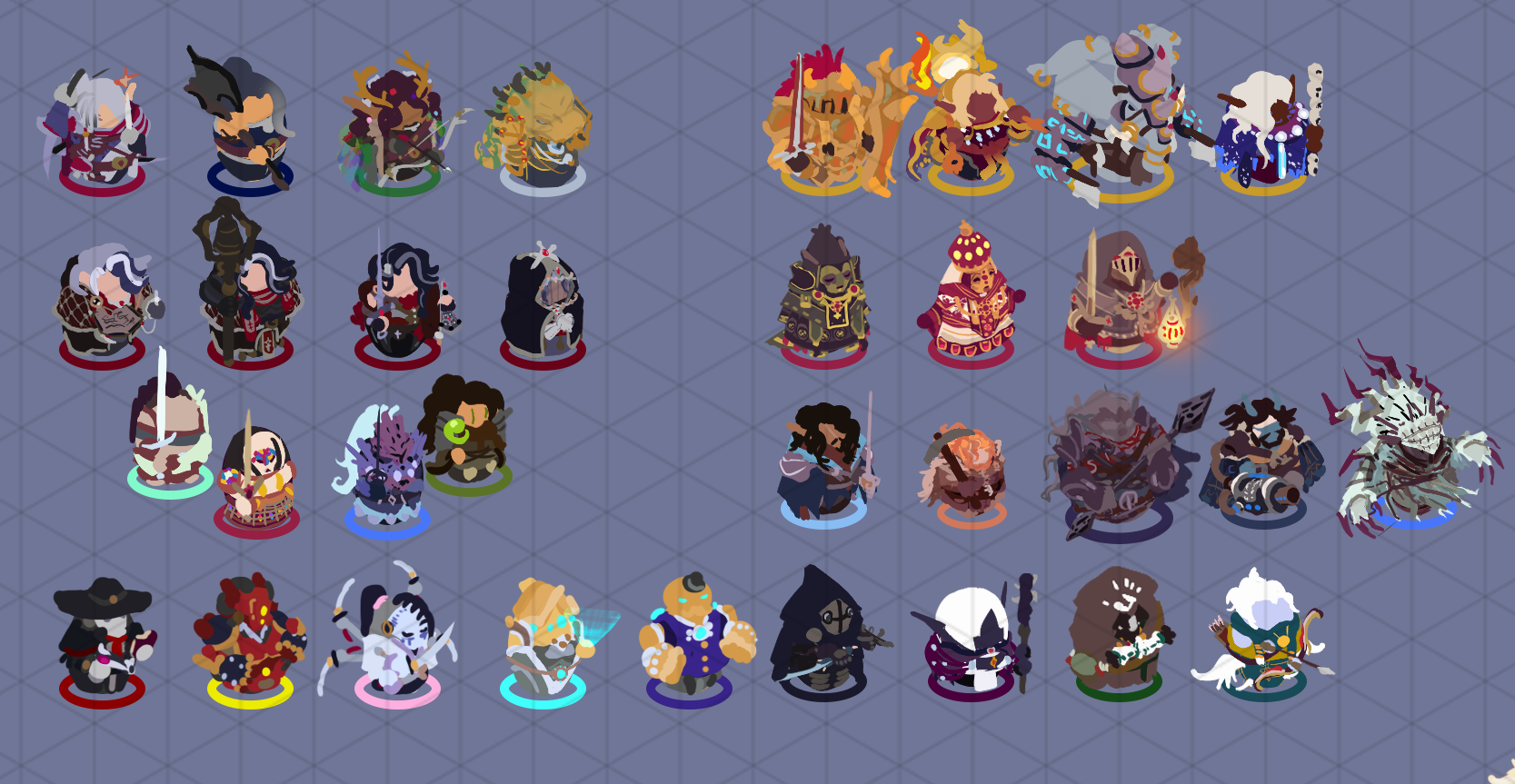
Benefits and achievements of isometric
-Isometric character miniatures with layered configurations: The strange "egg" shape that my isometric miniatures started out with quickly became a staple for simple character pawns, fleshing them out with layers of unique outfits, hairstyles, cosmetics, equipment, effects, and more. This makes them easily modular and capable of being reused and recycled when configuring new characters.
-Easy-to-use templates for building new creations: The ever-growing library of isometric assets I have in production means that I can quickly assemble realistic spaces with a catalog of unique props and environmental set pieces.
-Directional depth mapping in hexagonal axes: Perhaps one of the most easily unspoken benefits of this isometric approach is being able to track the position of objects in three dimensions. Such a perspective makes it clear to see which entities are near, far, above, below, in front, behind, and so on. Quick tools for flipping and rotating by isometric angles also makes it easy to manipulate a stage and prepare it in a variety of fashions for any circumstance, and to even do so in the middle of action.
-Layer linking and clipping masks for asset tracking: Because TTRPGs are constantly changing states, being able to organize layers, items, conditions, and more becomes an absolute necessity. Layer linking is an easy way to group and connect visual images while maintaining their visual fidelity and separate aspects. The use of clipping masks also makes it possible to overwrite visuals and assign new depth and hidden features to them.
-Isometric measuring tools for distance and area reference: Like any good mapping system, the isometric grid easily converts to 5ft increments and can be used to track distances, lengths, and areas with visual tools and highlighting effects. It maintains the classic feeling of counting out tiles and spaces while offering ease of use anyhow.
More examples:
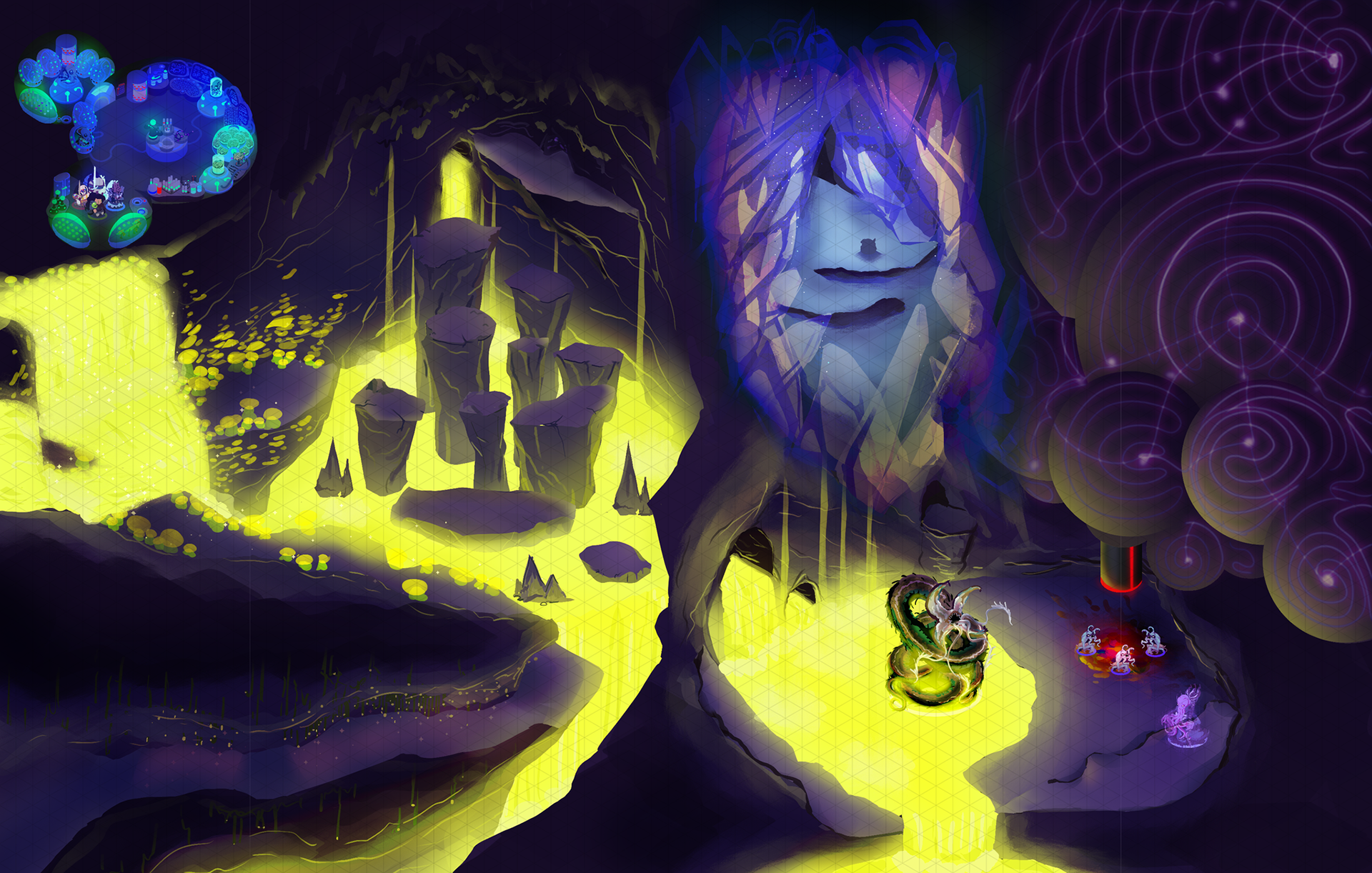
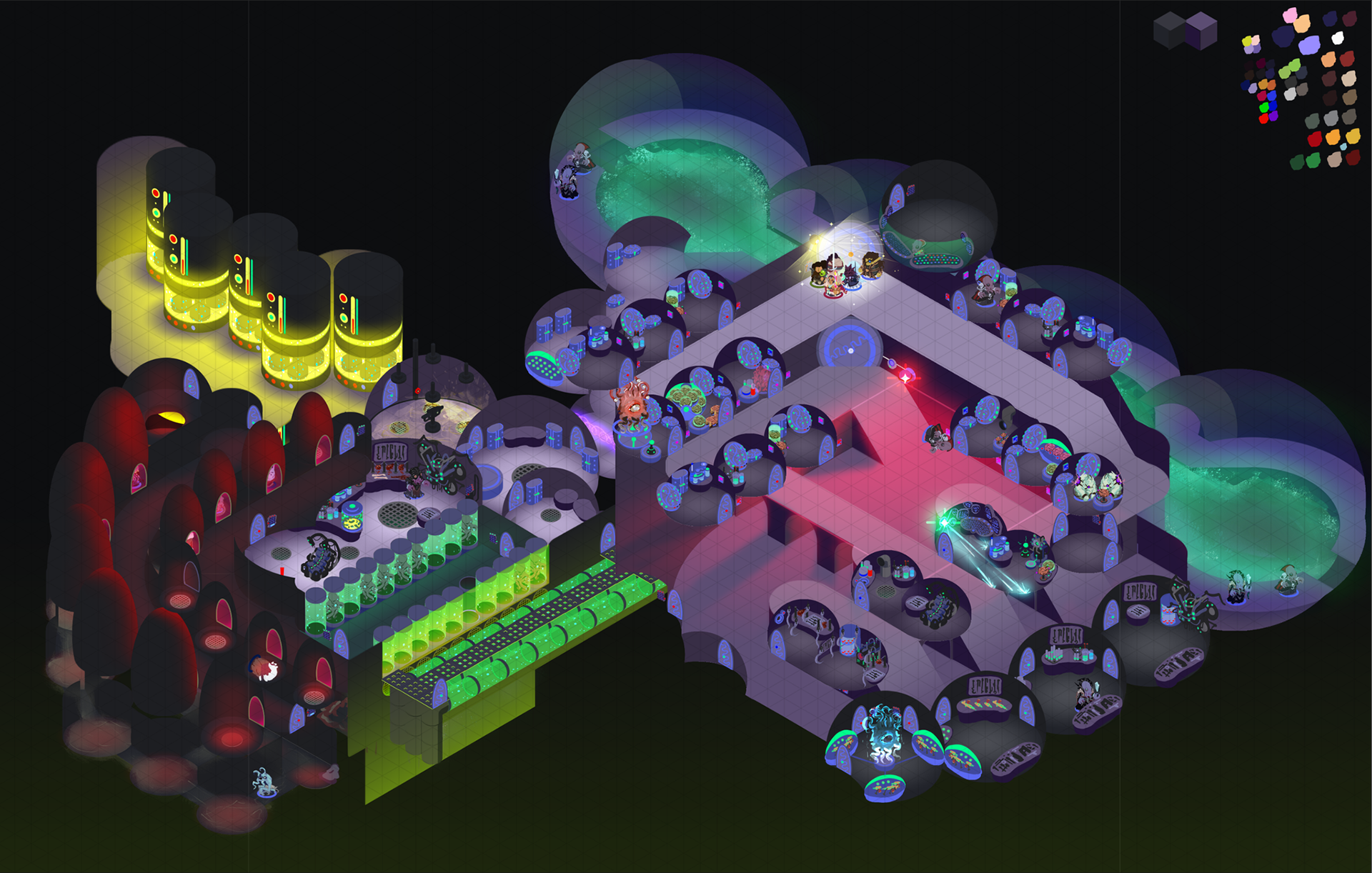

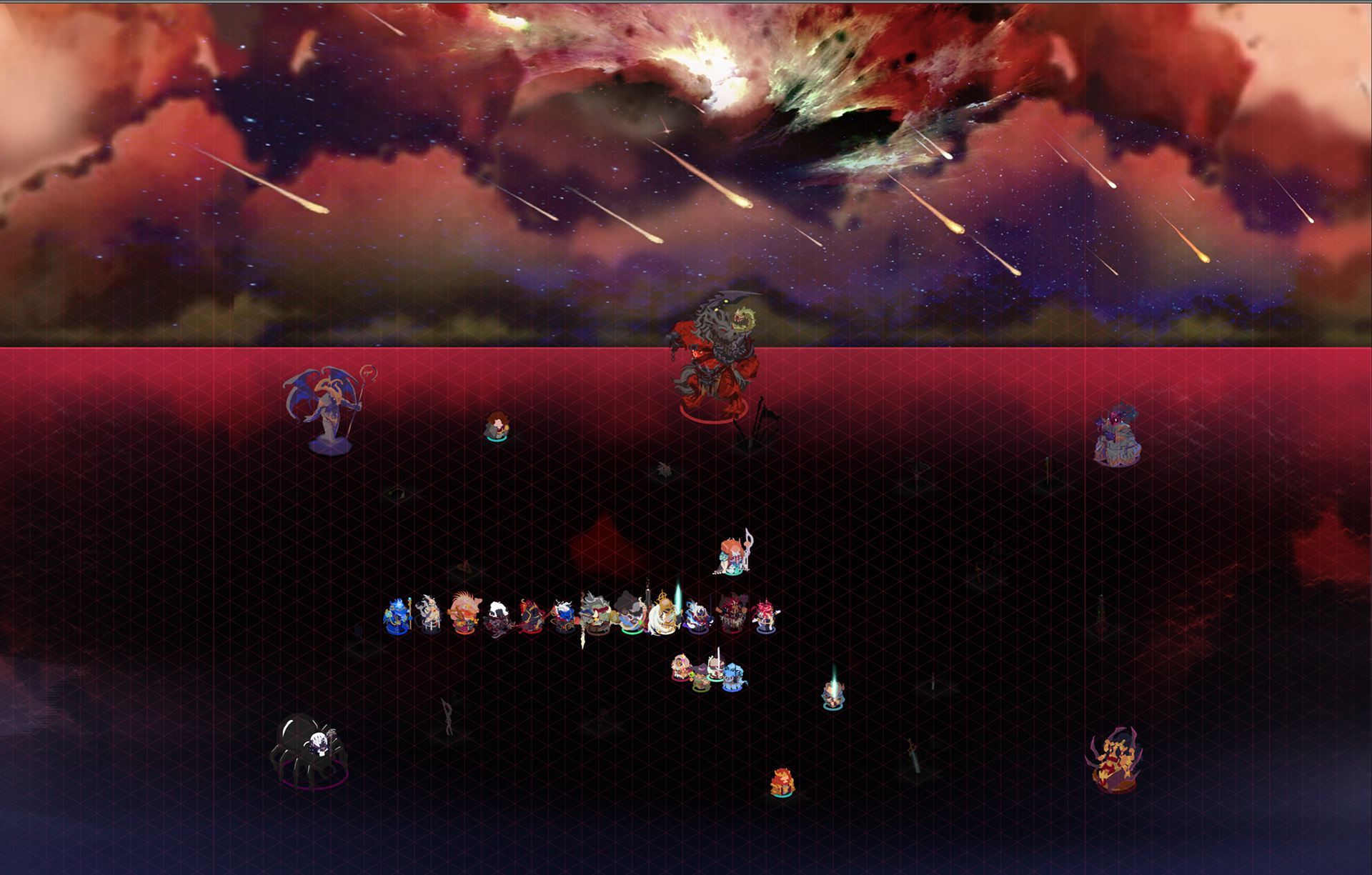
Citations:
Roll20 LLC 2023, Roll20 Hero Image, digital image, Roll20.net, accessed 15 March 2024,
<https://roll20.net/v3/assets/img/screens/Roll20-Hero-2023.png>.
Roll20 LLC 2023, Roll20 Hero Image, digital image, Roll20.net, accessed 15 March 2024,
<https://roll20.net/v3/assets/img/screens/Roll20-Hero-2023.png>.
Briganti 2022, Dungeon Alchemist Sample Image, digital image, "Dungeon Alchemist" Steam Store Page by Valve Corporation, accessed 15 March 2024, <https://cdn.akamai.steamstatic.com/steam/apps/1588530/ss_e33bf60cbaf28bafd276e656ea67ee8778e1a427.1920x1080.jpg?t=1710489255>.
Megasploot 2020, Dungeondraft Sample Map by Chad Hodgson, digital image, Dungeondraft.net, accessed 15 March 2024, <https://dungeondraft.net/>.
Foundry Gaming LLC 2020, Foundry VTT Tutorial Tavern Scene, digital image, FoundryVTT.com, accessed 15 March 2024,
<https://foundryvtt.s3.us-west-2.amazonaws.com/website-media-dev/user_1/screen/tutorial-tavern-scene-2020-05-24.png>.
<https://foundryvtt.s3.us-west-2.amazonaws.com/website-media-dev/user_1/screen/tutorial-tavern-scene-2020-05-24.png>.


